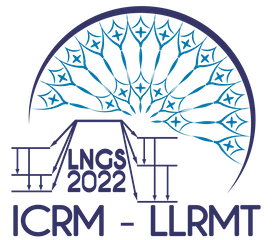Speaker
Description
A number of long-lived radionuclides suffer from half-life measurements that are outdated, have inconsistencies in the values obtained and/or limitations with regards to the uncertainty budget. When used in combination with absolute counting techniques, inductively coupled plasma mass spectrometry (ICP-MS) is increasingly recognised as part of the metrological toolbox for providing updated and precise half-life measurements. This project aims to develop a consistent approach to measurement of the number of atoms using ICP-MS/MS for the first time for this purpose to contribute to updated, precise half-life measurement of long-lived radionuclides. ICP-MS/MS has demonstrated enhanced interference removal capabilities and improved confidence in measurement for a number of long-lived radionuclides, and this can potentially be transferred to half-life measurement for such radionuclides.
This work presents the development of a method for remeasuring the half-life of U-238 using ICP-MS/MS for atom counting. This value is important for geochronological applications over long timescales. Accuracy and precision of the U-238 half-life are of utmost importance and it is therefore necessary to ensure that measurement methods and treatment of uncertainties in its half-life evaluation are up to date. Until recently, the U-238 half-life had not been measured since 1971, where highly enriched uranium underwent alpha counting. This measurement is used as a basis for the currently recommended half-life of 4.468 (5) × 109 years. Previous half-life measurements have shown to be outdated or inconsistent in their treatment of uncertainty budgets.
Prior to measurement, a U-238 sample was separated from its daughters using extraction chromatography and standardised for its activity using Defined Solid Angle counting. For ICP-MS/MS measurement, a series of isotope dilutions were prepared using standardised U-238 and U-234. A certified uranium reference material was used to assess the relative performance of different mass bias models, and to optimise the instrument parameters to minimise the uncertainty in the mass measurement. The subsequent derived number of U-238 atoms were combined with its absolute activity value to obtain a remeasured half-life value of 4.516 (58) ×109 years. Various parameters, including the sample introduction system, were investigated to improve the precision of the technique. This method can be applied to other isotopes with stable or long-lived analogues, including Sm-151 and Zr-93, using the tandem mass spectrometry capability to reduce problematic interferences.

